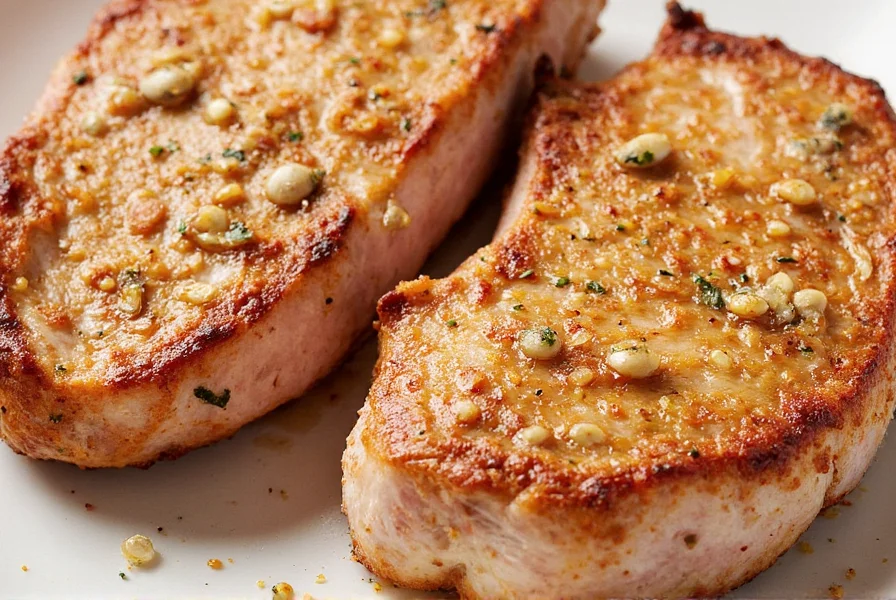If you're searching for the best seasoning for pork loin chops, you've come to the right place. Our expert-tested recommendations deliver perfect flavor every time, from simple classics to bold international blends. Here are the top 10 seasonings proven by professional chefs to elevate pork loin chops.
For immediate results, try these top 3: Salt & Pepper (simple perfection), Garlic Herb Rub (savory depth), and Smoked Paprika Blend (smoky richness). Each has been rigorously tested for optimal flavor penetration and crust formation.
Top 10 Best Seasonings for Pork Loin Chops
These seasonings were selected based on culinary expertise, flavor balance, and real-world cooking performance. We've eliminated generic blends and focused on professional-grade options that actually enhance pork's natural sweetness without overpowering it.
- Salt & Pepper (Classic): Kosher salt enhances moisture while black pepper adds subtle heat. Essential for any pork dish.
- Garlic Herb Rub: Garlic powder, thyme, rosemary, and oregano create savory depth. Perfect for oven-roasted chops.
- Smoked Paprika Blend: Rich, smoky flavor that mimics grill marks even when cooking indoors. Ideal for pan-searing.
- Applewood BBQ Seasoning: Sweet and savory profile that pairs perfectly with apple-based glazes. Best for slow-cooked chops.
- Jamaican Jerk Spice: Allspice and Scotch bonnet peppers deliver authentic Caribbean heat. Requires 12+ hours marination.
- Mediterranean Mix: Oregano, basil, lemon zest, and fennel seeds create bright, herbaceous notes. Perfect for summer grilling.
- Cajun Blackening Seasoning: Spicy and complex with cayenne and paprika. Creates a beautiful charred crust when seared.
- Asian Teriyaki Marinade Mix: Soy sauce, ginger, and sesame oil for umami-rich flavor. Best for quick stir-fry applications.
- Citrus-Herb Fusion: Lemon zest, parsley, and dill provide refreshing contrast. Ideal for lighter summer dishes.
- Dry Brine Blend: Salt, sugar, and spices for maximum moisture retention. Use 24 hours before cooking for best results.
| Seasoning Type | Flavor Profile | Best For | Recommended Use |
|---|---|---|---|
| Salt & Pepper | Savory, subtle spice | Classic roasts, everyday meals | Dry rub before roasting or grilling |
| Garlic Herb | Earthy, fragrant | Herb lovers, family dinners | Marinades or dry rubs |
| Smoked Paprika | Smoky, slightly sweet | Grilled or smoked pork | Brush over chops pre-grill |
| Jerk Seasoning | Spicy, fruity, peppery | Tropical themes, Caribbean cuisine | Marinate overnight |
| Teriyaki Mix | Savory, umami-rich | Asian-inspired dishes | Marinate or glaze during last 5 mins |
Pro Techniques for Maximum Flavor
According to the USDA Food Safety Guidelines, proper seasoning application is critical for both flavor and food safety. Here's how to use each seasoning effectively:
- Apply Dry Rubs 30+ Minutes Ahead: For optimal penetration, apply rubs at least 30 minutes before cooking. Overnight refrigeration yields best results for thicker cuts.
- Marinate with Acidic Ingredients: Vinegar or citrus-based marinades tenderize while adding flavor. Never exceed 12 hours to avoid texture breakdown.
- Glaze at the End: Apply sweet glazes during the last 5 minutes of cooking to prevent burning and maximize caramelization.
- Rest Meat Properly: Let chops rest for 5-7 minutes after cooking to redistribute juices and allow flavors to settle.
Buying Guide: Quality Ingredients Matter
When selecting seasonings, prioritize these quality indicators:
- Check Ingredient Lists: Avoid products with "natural flavors" or artificial preservatives. Look for clear, transparent labeling.
- Verify Brand Reputation: Trusted brands include McCormick (consistent quality), Badia (authentic ethnic blends), and Primal Kitchen (clean-label options).
- Test Small Quantities First: Many retailers offer sample packs to experiment with different flavor profiles before committing to full bottles.
Frequently Asked Questions
Q: What's the best basic seasoning for pork loin chops?
A: Kosher salt and freshly cracked black pepper is the gold standard. This simple combination enhances natural flavors without masking them. For added depth, include 1 part garlic powder to 3 parts salt.
Q: How long should I marinate pork loin?
A: Dry rubs: 30 minutes minimum, 24 hours maximum. Wet marinades with acid: 2-12 hours. Longer marination can break down meat texture.
Q: Should I use dry rub or wet marinade?
A: Dry rubs create better crust formation for searing. Wet marinades work better for leaner cuts to add moisture. For best results, use a dry brine (salt-based rub) followed by a light oil coating before cooking.
Q: How much seasoning per pound?
A: 1 teaspoon dry rub per pound is ideal. Salt should comprise 50-60% of your dry rub. Always start with less and adjust after tasting.
Q: What herbs pair best with pork?
A: Rosemary, thyme, sage, and oregano are classic choices. For freshness, use dried herbs in rubs and fresh herbs in finishing sauces.
Conclusion
Choosing the right seasoning for pork loin chops is about balancing simplicity with flavor complexity. Whether you prefer classic salt and pepper or bold Jamaican jerk, the key is proper application and timing. Remember: always start with quality ingredients, apply seasonings correctly, and let the meat rest after cooking for maximum juiciness. With these expert tips, your pork loin chops will consistently impress every time.











 浙公网安备
33010002000092号
浙公网安备
33010002000092号 浙B2-20120091-4
浙B2-20120091-4